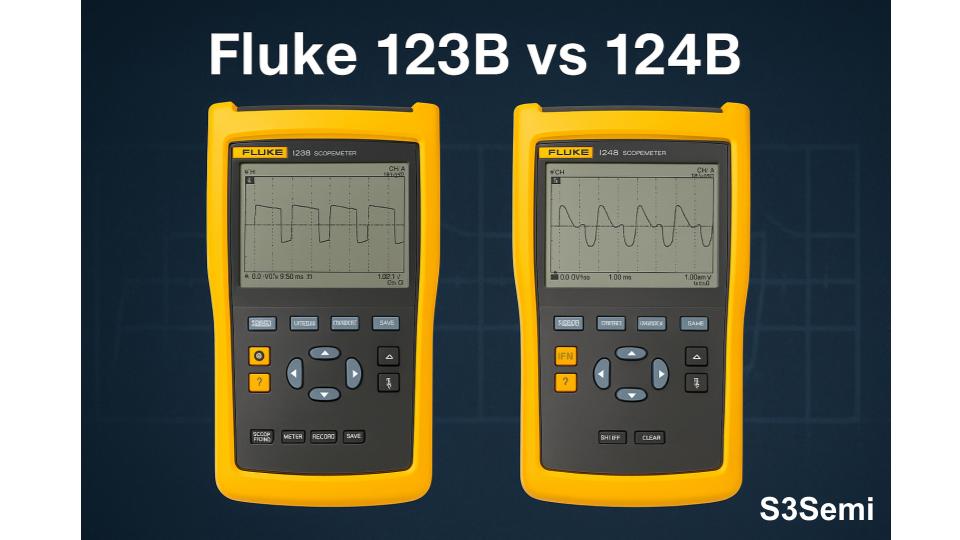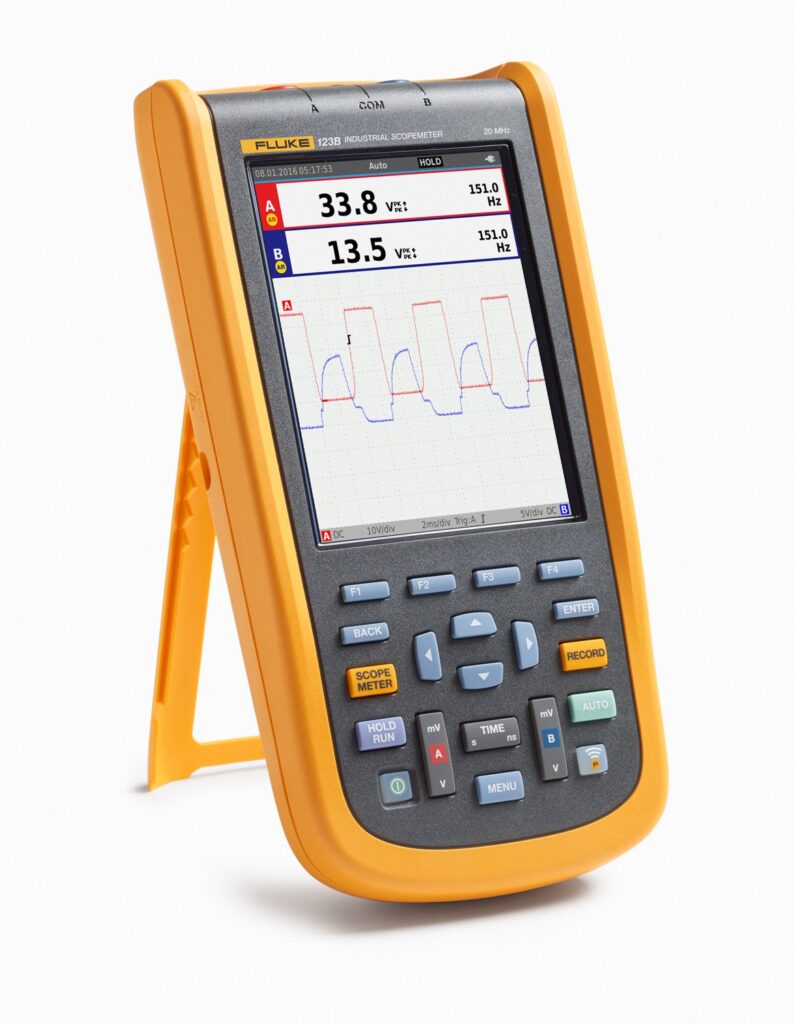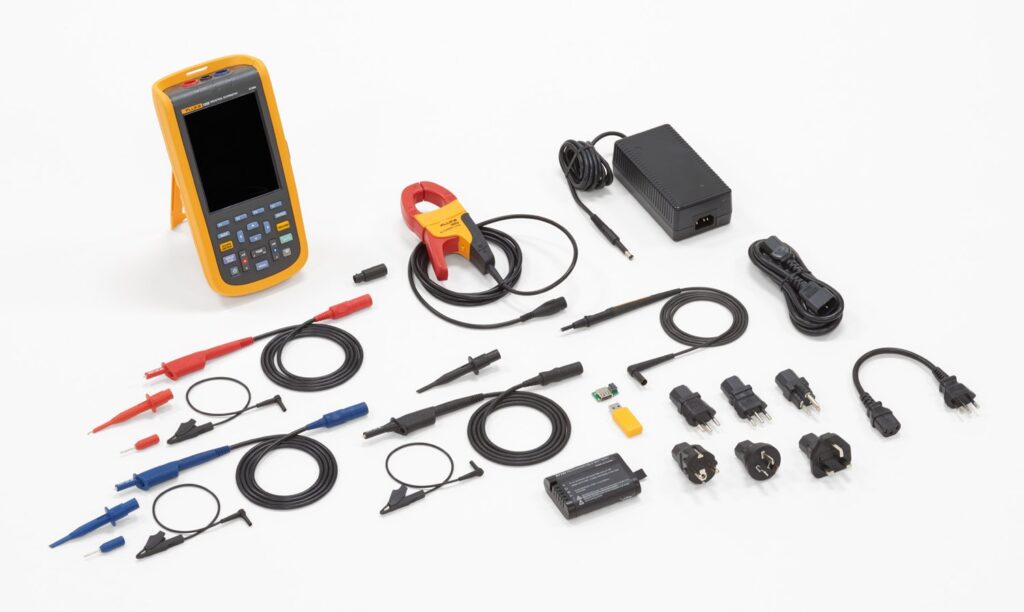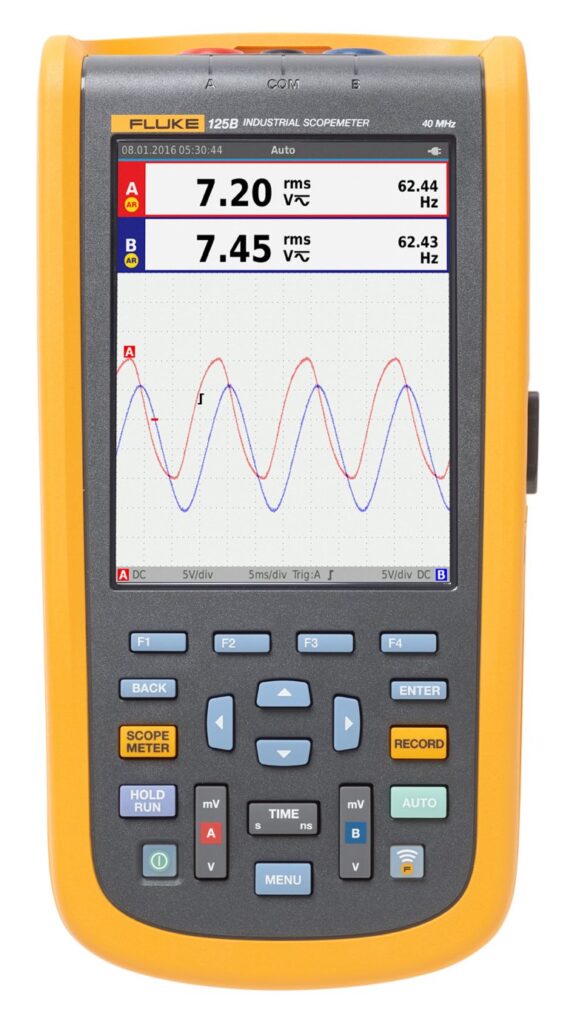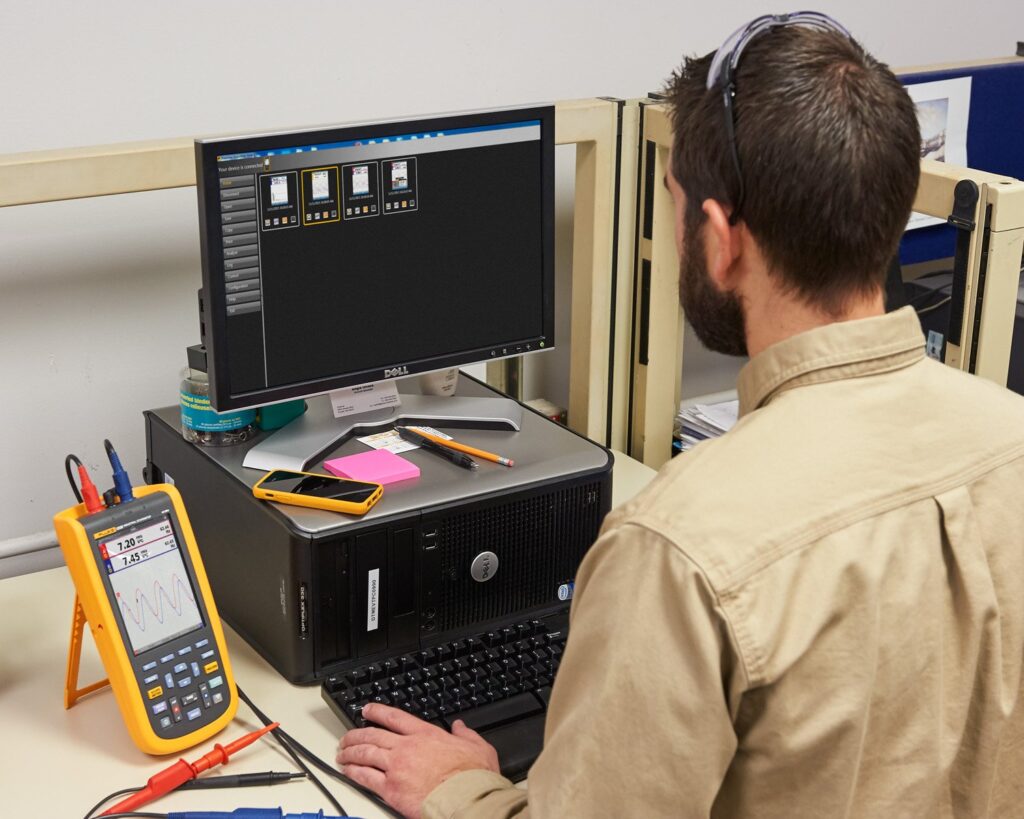When it comes to portable oscilloscopes for field diagnostics, Fluke’s ScopeMeter 120B Series stands out as a trusted choice among engineers and technicians. Two of the most popular models in this lineup – the Fluke 123B and Fluke 124B – may look similar, but they have distinct capabilities that make each one better suited for specific applications.
🏷️ Fluke Multimeter Deals ⭐⭐⭐⭐
This comparison will help you decide which model fits your needs best.
🔧 Overview
Both the 123B and 124B are two-channel handheld oscilloscope/multimeter hybrids, designed for industrial troubleshooting. They combine the functionality of a digital multimeter (DMM) with an oscilloscope, allowing users to visualize and measure electrical signals directly in the field – no benchtop setup required.
Here’s a quick summary of their core similarities:
- Dual input channels with isolated floating inputs
- Bandwidth up to 40 MHz (depending on model)
- Built-in multimeter functions (V, A, Ω, continuity, capacitance)
- Recorder and TrendPlot™ for long-term signal logging
- Fluke Connect® compatibility for wireless data sharing
Now let’s look at where they differ.
⚙️ Key Differences
| Feature | Fluke 123B | Fluke 124B |
|---|---|---|
| Bandwidth | 20 MHz | 40 MHz |
| Sample Rate | 40 MS/s | 40 MS/s |
| Rise Time | 17.5 ns | 8.75 ns |
| Automatic Measurements | 14 | 22 |
| BusHealth Test | No | Yes |
| Power Quality Measurements | Basic | Advanced |
| Triggering Options | Edge | Edge, Pulse Width, Video |
| Recommended For | General electrical/electronic troubleshooting | Industrial, automotive, and control system diagnostics |
| 💳 Pricing | 💲Check Price | 💲Check Price |
The Fluke 124B doubles the bandwidth of the 123B, making it more suitable for capturing faster transients and analyzing high-frequency signals such as switching noise or control pulses. It also includes BusHealth testing, a diagnostic tool that assesses the signal quality of industrial bus systems like CAN, Profibus, and RS-485 – essential for automation environments.
Meanwhile, the 123B provides the same accuracy and rugged design at a lower cost, ideal for electricians or field engineers dealing mostly with power and low-frequency signals.
🧩 Performance and Usability
Both models are built around Fluke’s philosophy of simplicity and reliability. The interface is intuitive, with automatic scaling and measurement cursors that make waveform analysis quick and straightforward.
The ScopeMeter 124B includes additional automatic measurements such as frequency, period, duty cycle, and pulse width – features that reduce the need for manual calculations.
For users who frequently deal with digital control systems or switching power supplies, the 124B’s extra bandwidth and trigger flexibility offer clearer visibility of fast edges and glitches.
🔋 Battery Life and Portability
- Battery Life: Both offer around 7 hours of continuous operation.
- Charging: Fast charge feature – 80% capacity in about 1 hour.
- Rugged Design: CAT IV 600 V and CAT III 1000 V safety ratings ensure protection in harsh industrial environments.
Both are built for real-world use: compact, shock-resistant, and ready to handle dusty or noisy worksites.
📶 Connectivity and Data Logging
Each unit supports Fluke Connect®, allowing users to upload measurements wirelessly to the cloud and share them via smartphone or PC.
The TrendPlot™ function turns the ScopeMeter into a paperless recorder, automatically capturing intermittent faults and voltage drops over time.
💡 Which One Should You Buy?
| User Type | Recommended Model | Why |
|---|---|---|
| Electricians and maintenance technicians | Fluke 123B | Reliable, simple, and affordable for low-frequency troubleshooting |
| Automation and control engineers | Fluke 124B | Higher bandwidth, BusHealth test, and better triggering options |
| Industrial electronics engineers | Fluke 124B | More advanced diagnostics and precision waveform capture |
| Training or educational labs | Fluke 123B | Cost-effective and user-friendly |
If your work involves basic power circuits, motors, or HVAC systems, the Fluke 123B is more than sufficient. But if you regularly troubleshoot automation networks or fast-switching electronics, the Fluke 124B’s advanced tools will save time and provide deeper insight.
✅ Final Verdict
Both models exemplify Fluke’s excellence in portable test equipment, combining ruggedness with high-quality measurements.
- Choose Fluke 123B for simplicity, durability, and cost-efficiency.
- Choose Fluke 124B for speed, precision, and advanced diagnostics.
